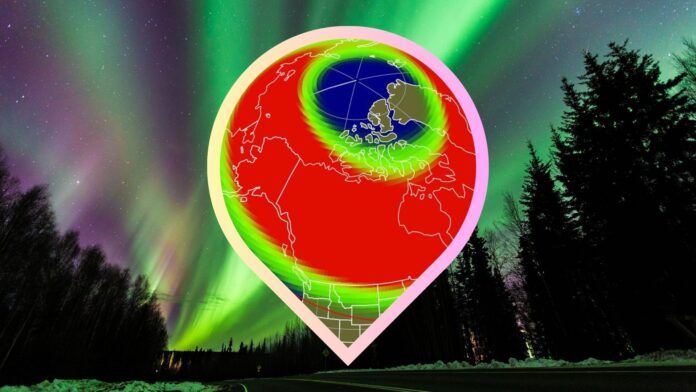Get ready for an celestial show! The mesmerizing aurora borealis, also known as the Northern Lights, may illuminate the night sky over a significant portion of the United States tonight (November 11-12). This spectacle is predicted thanks to two incoming coronal mass ejections (CMEs) that could spark strong geomagnetic storm conditions.
A Solar Storm in Our Backyard
The National Oceanic and Atmospheric Administration (NOAA), our nation’s space weather forecasters, anticipate a surge in geomagnetic activity reaching levels classified as “strong” (G3). This heightened solar wind activity is triggered by CMEs— colossal blasts of plasma and magnetic fields erupting from the sun.
Two CMEs are already on their way to Earth. The first launched on November 9th, with its arrival expected late tonight. Hot on its heels is a second CME that erupted yesterday. Adding to the cosmic drama, a third CME associated with a major X5.1 solar flare – the most powerful flare of 2023 thus far – is currently hurtling toward us and predicted to make impact around 7 a.m. EST (1200 GMT) on November 12th. Given this intensified activity, NOAA has issued a G4 storm watch for November 12th.
Where to Look Up
Based on NOAA’s aurora forecast map, a stunning 21 U.S. states have the potential to catch a glimpse of the celestial light show. These include:
- Alaska
- North Dakota
- Minnesota
- Montana
- Wisconsin
- Michigan
- Maine
- South Dakota
- Idaho
- Vermont
- Washington
- New Hampshire
- Wyoming
- New York
- Iowa
- Massachusetts
- Pennsylvania
- Nebraska
- Ohio
- Illinois
- Indiana
Remember: Auroras are notoriously unpredictable. While these states lie within the predicted auroral oval, sightings can extend farther south on exceptionally active nights and disappear entirely if conditions aren’t favorable. Numerous factors, including atmospheric conditions and solar activity strength, determine how vibrant and visible the aurora will be.
Timing is Everything
The best opportunity to witness this celestial ballet will likely occur between 4 p.m. – 10 p.m. EST (2100-0300 GMT) tonight as geomagnetic storm conditions transition from minor (G1) to moderate (G2). The peak period for auroral displays is expected between 10 p.m. and 1 a.m. EST (0300-0600 GMT), when the strongest (G3) storms are predicted.
Aurora Hunting Tips
If you live in one of these lucky states, consider these tips to maximize your chances:
- Find a clear vantage point: Head north and locate a spot with an unobstructed view of the horizon, far from city lights. Light pollution dramatically hinders aurora viewing.
- Embrace technology: Use your phone camera! The sensor is highly sensitive and often picks up faint auroras before they become visible to the naked eye. This can help pinpoint the best direction to look.
- Let your eyes adjust: Allow at least 30 minutes for your vision to adapt to the darkness.
Dress for Success (and Patience)
Remember, aurora viewing is a waiting game! Wear warm layers as you might be outside for an extended period. Be patient and keep scanning the skies – the wait can be well worth it when those ethereal curtains of light finally ignite above you.
Download a space weather app that provides real-time aurora forecasts based on your location. “My Aurora Forecast & Alerts” (available on iOS and Android) or “Space Weather Live” are excellent choices, providing current conditions and potential aurora visibility for your area.
Remember, these celestial displays are a reminder of the powerful connection between our planet and the Sun. Enjoy the show!





























